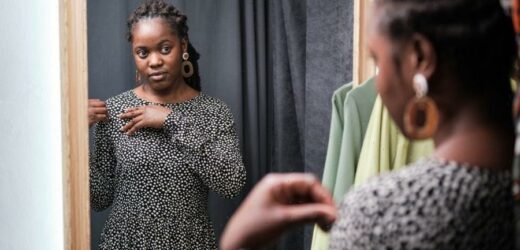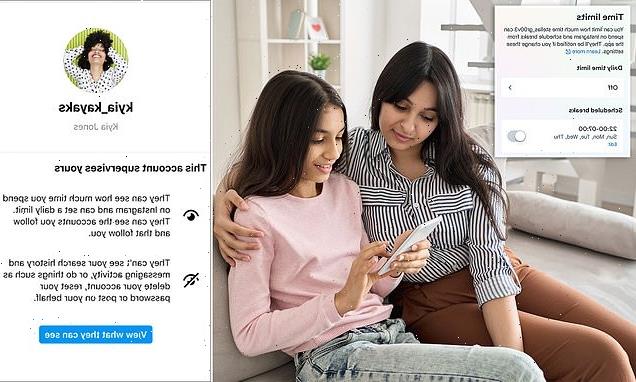It’s time to get dressed. Which choice best describes you right now? A) grab the outfit you planned to wear. B) stare at your closet hoping a new outfit idea will come to you. Or C), just wear your usual because you have “nothing” to wear.
Most of us have been all three at some point. There are times we have our wardrobe together. Other times we’re struggling to make it work. And still, other times it feels like we’re about to be overcome by sartorial monotony. It’s not unusual for our clothing to mirror some of the ups and downs of life. But it can also reflect more long-standing belief systems such as our assessment of our worth — our self-esteem.
A polished and confident appearance gives off I-feel-good-about-me vibes. And yes, that impression may not be accurate, but we may all be able to agree that it is part of the solution (we like to keep it positive over here). That is, it isn’t enough to have a great external image, we must work to ensure that our internal image is just as great. Otherwise, our clothes may be doing too much, working to fill a void. So, if you in fact know you’re smart and competent, let’s see a wardrobe to match. But if you’re still working your way towards the whole smart and competent thing, you may feel the need for clinical intervention but can still use your appearance as a catalyst for growth. Wherever you fall, here are four ways to use clothes and appearance to support positive self-esteem.
Consider Your Color Pattern
Without going into the complexities of color psychology, there are a few things to consider. Color is perceived in context; and our reaction to any color depends upon the color variation and how it is used. So while purple is generally associated with being regal, red is linked to being energetic, and yellow is linked to being happy. This may or may not be our experience or feeling when we wear such shades. Research shows we fit into one of four color patterns: spring (lively, primary colors) if we are extroverted; summer (sun-drenched colors) if we are understated; autumn (intense shades) for fiery individuals; and winter (strong, primary colors) for our more dramatic sisters. While we are thought to be predominately one pattern, there are many variations; and wearing colors associated with our pattern helps us to be more at ease with who we are. While you can consider taking a color personality test, know that no test is 100 percent and you may do well to consider which color patterns you are drawn to as a first step.
Dress Your Mood
This is not to be confused with dress yourself happy. Dress your mood means even if you’re in a funk, you create an outfit that reflects it in the very best way, ironically feeling more energized. So if I’m feeling all over the place, sneakers and sequins may be my go to. It’s a way of feeling fashion; and everyone’s way of feeling it is different. This is similar to the premise of art therapy, a therapeutic modality through which creativity is the primary tool used to process emotional distress. Studies show that art therapy is related to improved mood and can be used to support emotional healing. Similarly, dressing our mood, as a creative act, can help us manage or process challenging moments.
Know the Message
How would you describe your outfit? Your response probably consists of a number of appearance cues, a term psychologists use to describe aspects of an outfit or appearance that convey a specific meaning. The parts of an outfit that stand out for me may not be the ones that stand out for you, but either way our clothing communicates a message to others and ourselves in much the same way we use symbols of language to verbally communicate a message. For instance, we tend to associate glasses with intelligence or designer clothing with high income, although this may or may not be the case. Sometimes the message we send with our clothing is unintended or affects us below the level of our awareness. What message is your clothing communicating to you? A closet with only oversized clothing can signal a desire to hide from others. A closet with only designer labels can signal an attempt to compensate for feeling less than adequate. Or one full of unworn clothes may signal a need to shop to feel better. In this way your clothes may be supporting a less than adequate self-esteem and you may need to make some internal changes.
On the other hand, maybe you simply need to be more attuned to the messages you’re conveying through your appearance. This comes with exposure to styles and looks, knowing what they symbolize, and a growing awareness of how you want to use it to communicate your unique message. So if you want to grow locs, what’s the reason? What do you know about the history of locs and what it historically conveys? Does it match with what you want to communicate about yourself? In essence, consider what you need in your wardrobe and how you want to appear. This will help you to create a look that fits with your lifestyle and goals; and communicate the best version of you.
Work What You’ve Got
Sometimes what’s holding us back from having a well-suited wardrobe is not poor self-esteem, but money. In other words, our clothes aren’t doing enough. Many of us would have no problem putting together a wardrobe that reflects our best selves and the lives we want to live if we could only afford it. But until hard work pays off or we find the genie in the bottle (whichever comes first), we can work with the pieces we’ve got until we get more. While this may sound underwhelming, creativity grows with challenges and supports self-esteem. Not only may we surprise ourselves by creating outfits we would not have thought to create had we been able to throw money at the next best thing, but working with what we have is also a therapeutic tool that drives us to place value on what we have, making more room to appreciate what is yet to come.
Source: Read Full Article


